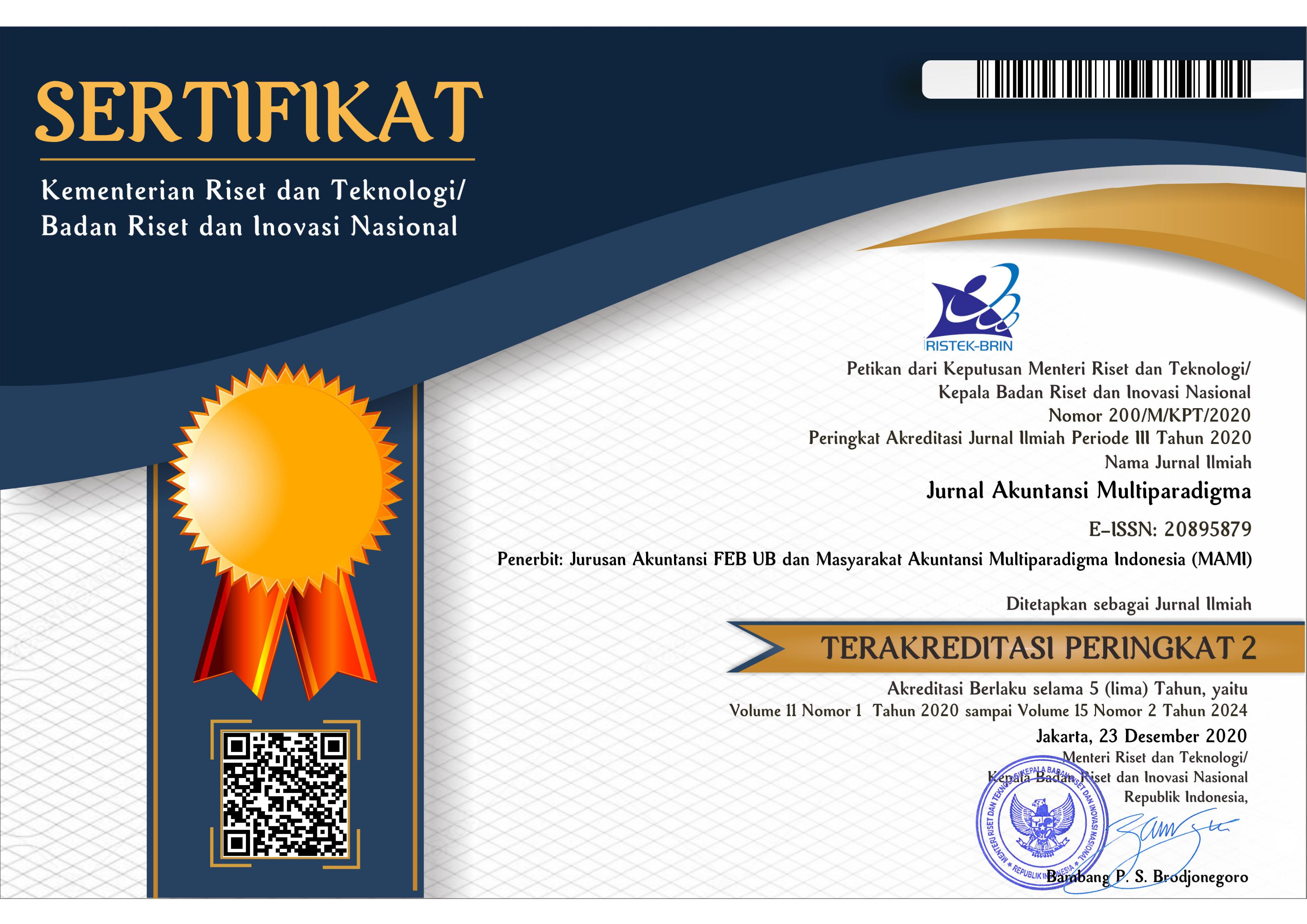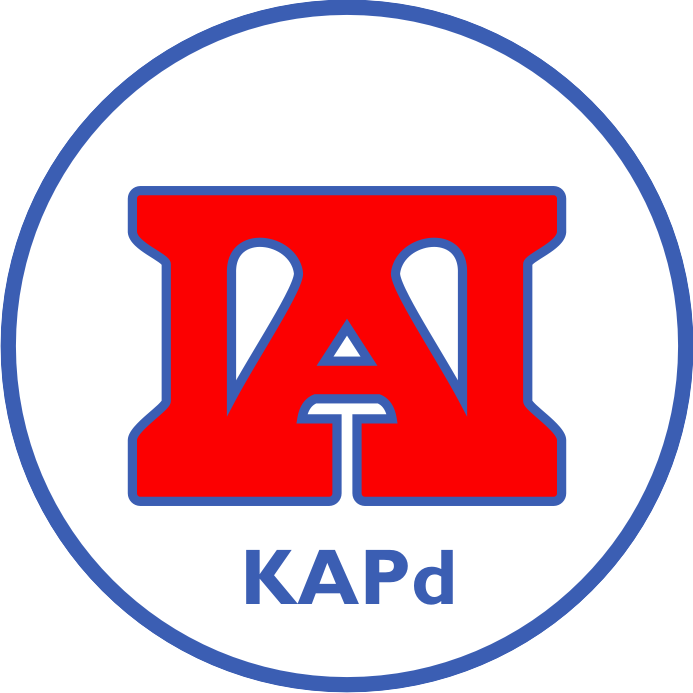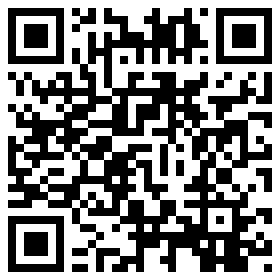Online Submissions
Already have a Username/Password for Jurnal Akuntansi Multiparadigma?
Go to Login
Need a Username/Password?
Go to Registration
Registration and login are required to submit items online and to check the status of current submissions.
Author Guidelines
THE EDITORIAL GUIDELINES
JOURNAL OF MULTIPARADIGM ACCOUNTING (JAMAL)
FOR CONCEPTUAL AND EMPIRICAL PAPER
- JAMAL accepts papers/articles in the field of multiparadigm accounting as follows:
- The Positivist Paradigm.
- The Interpretivist Paradigm.
- Critical Paradigm.
- The Postmodernist Paradigm.
- The Religious Paradigm.
- The Spiritual Paradigm.
- Divine Paradigm.
- The Nusantara Paradigm.
- Articles submitted can be in the form of:
- Empirical research.
- Recent accounting thought (conceptual paper - only by invitation).
- Book Review (only by invitation).
- Orbituary (only by invitation).
- Articles must have never been submitted or under a submission process in other journals. Articles can be written in Indonesian or English language.
- Articles cannot be presented at more than one conference or seminar. Articles known to have been presented at more than one aborted conference and the lead author are not allowed to submit articles in this journal.
- Systematics of empirical articles should consists of: Title of Article; Abstract; Keywords; Introduction; Method; Results and Discussion; Conclusion; References.
- The title in Indonesian is no more than 12 words; in English is no more than 12 words. The title is written entirely in capital letters and typed in center and bold. The title may not contain methods like analysis, influence, test, and the like. Site name and research year should not be included.
- The names of all authors are written in full without titles, the author's institution of origin, and complete mailing addresses only in metadata when submitting articles for publication through OJS. The author's identity is not included in the article.
- The abstract and keywords are written in two languages (English and Indonesian). Each abstract is 100-150 words (excluding the structure title), one paragraph, and typed in one space using italics/italics. The abstract should at least contain the title, main purpose, method, main findings, theory and practical implications, and novelty.
- Keywords in Indonesian or English consist of 3-6 terms.
- The introduction contains research problems, insights, problem-solving plans, research objectives, a summary of theoretical studies, and expectations for research results. The introduction must include state of the art: grouping previous studies with similar findings, discussing differences between research groups (research gap), shows how the article has scientific novelty compared to previous studies that have been discussed (novelty). The introduction must contain the relevance of the research issue to the nation's problems. The proportion of the introduction is 15-20% of the total length of the article. The introduction does not need a title.
- The method contains a design or research design according to the chosen paradigm. Articles need to present research objectives. Articles that follow the positive paradigm present research models, equation models, populations, samples, and operational definitions of variables and include sources used as references for replication. Articles following the non-positive paradigm present the stages of analysis according to the specific method adopted (e.g., phenomenology, genealogy, literature studies, critical theory, and the thoughts of Nusantara figures). Hypotheses and research formulas should not be disclosed formally. Analysis software does not need to be listed. The proportion of research methods is 15-20% of the total length of the article.
- The results and discussion contain data analysis that answers research questions. Tables, graphs, or charts are allowed if they can be explained critically and in depth. The discussion does not "repeat" the contents of tables, graphs, or charts but is more directed at descriptions, explanations, and or predictions (positive paradigm); in-depth analysis, symbol meaning and interpretation (interpretive paradigm); in-depth analysis and critical proposal argumentation (critical paradigm); an analysis of objectivity-subjectivity interrelationships regarding new findings (the postmodern paradigm); logical, critical analysis, objectivity-subjectivity interrelation in religious, spiritual, or divine corridors (spiritual/religious/divine paradigm); in-depth analysis of accounting construction based on Nusantara principles (Nusantara paradigm). All research approaches (paradigms) must relate findings to previous theories and research in-depth and critically. The results and discussion must be accompanied by solutions to solve the nation's problems. The proportion of results and discussion is 65-80% of the article's total length.
- The conclusion contains the essence of the research results and discussion. The substance of the conclusion is relevant to the findings. Conclusion are written in a narrative manner that includes the main findings according to the purpose of the article and the implications of the results in solving the nation's problems. Conclusions are written in a maximum of two paragraphs.
- The references contain only referenced sources. Reference of at least 80% of primary literature (credible scientific journals) published in the last ten years. The primary literature is sources of research articles in journals, proceedings, seminars, and research reports (including theses and dissertations).
- Systematics writing or article for accounting thought and critical/conceptual assessment consists of Title; Abstract; Introduction; Discussion (may include Sub Discussion); Conclusions, and References.
- The title should, at the most, be 12 words in English and Indonesian. The title is in capital letters, typed in the center, justified, and bolded.
- The names of all authors are written in full without titles, the author's institution of origin, and complete mailing addresses only in metadata when submitting articles for publication through OJS. The author's identity is not included in the article.
- The abstract should be written in two languages (both Indonesian and English). Each abstract consists of 75-100 words. Abstracts should contain the title (with bold formatting, purpose, and result).
- Keywords should consist of 3-6 words.
- The introduction consists of 4-5 paragraphs that state research issues, state of the art, and is ended with the research purpose. State of the art refers to discussing the discourse and theoretical studies that reflect the emergence of new issues (novelty) in the research. The proportion of the introduction should not be more than 10-15% of the total length of the article. The introduction consists of 4-5 paragraphs that state research issues, state of the art, and is ended with the research purpose. State of the art refers to discussing the discourse and theoretical studies that reflect the emergence of new issues (novelty) in the research. The proportion of the introduction should not be more than 10-15% of the total length of the article. The introduction does not need to be given a title.
- The discussion contains the analysis results of logical, critical, and reflective arguments on the discussed issue. An important element of the discussion is the establishment and the author's attitude, both objectively and subjectively supported by strong and scientific arguments.
- The conclusion should contain the essence of the results of the discussion and emphasis on the ideas initiated.
- The references contain only referenced sources. The reference of at least 80% in the form of primary literature (credible scientific journals) published in the last ten years. The primary literature is sources of research articles in journals, proceedings, seminars, and research reports (including theses and dissertations).
- The article should be written in formal scientific language.
- The new paragraph begins after the sixth space from the left margin. There should be no spaces between paragraphs.
- All foreign words and special terms should be written in italics. In English-language articles, italics are used only for writing other than English.
- Taping margins are; left margin: 2 (two) centimeters; top margin: 2 (two) centimeters; right margin: 2 (two) centimeters; and bottom margin: 2 (two) centimeters.
- It is not allowed to give attachments. All tables, pictures, or transcripts are included in the body of the articles.
- Citation style within the body text and in references are as follows American Psychological Association (APA) Style 7th Edition.
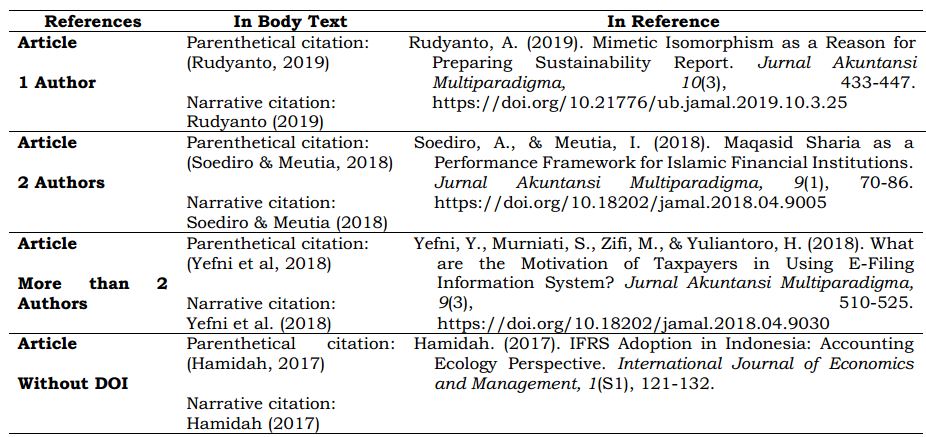
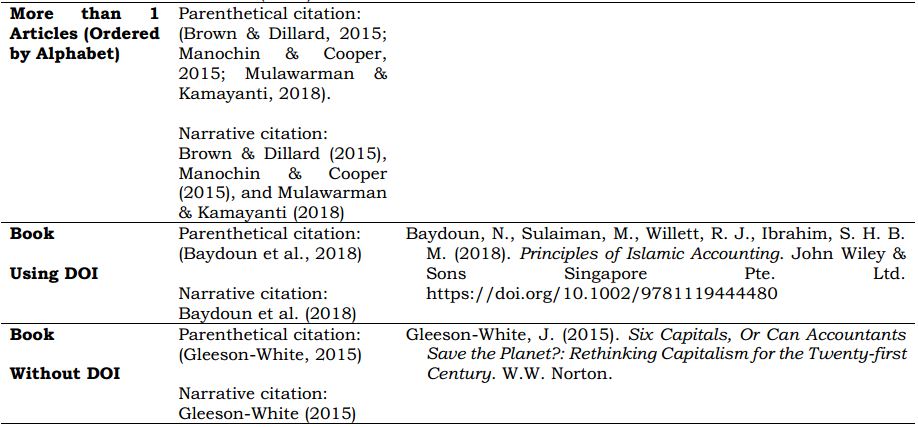

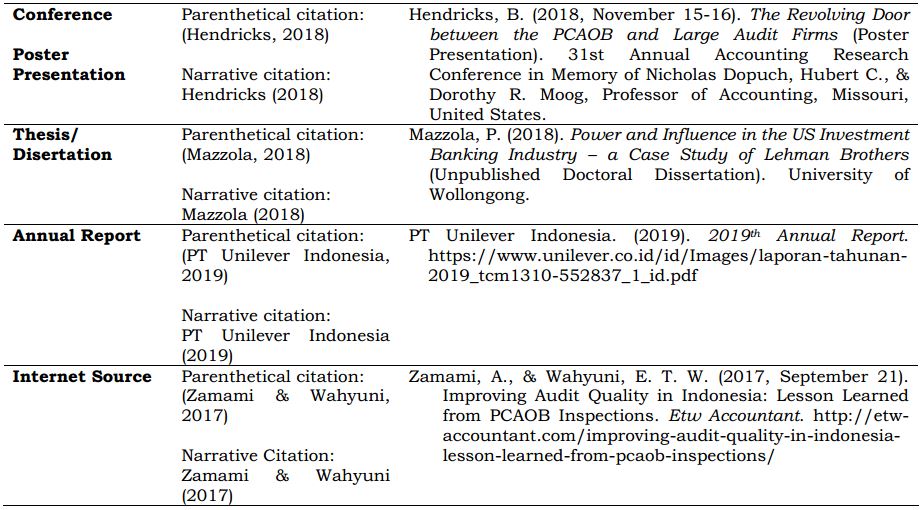
- There is no vertical line for the table. The table is placed in the center. The table source is placed under center alignment. The table display is as follows:
- The figure title and source are placed on the center bottom of the figure. The figure is unframed. The figure display is as follows:
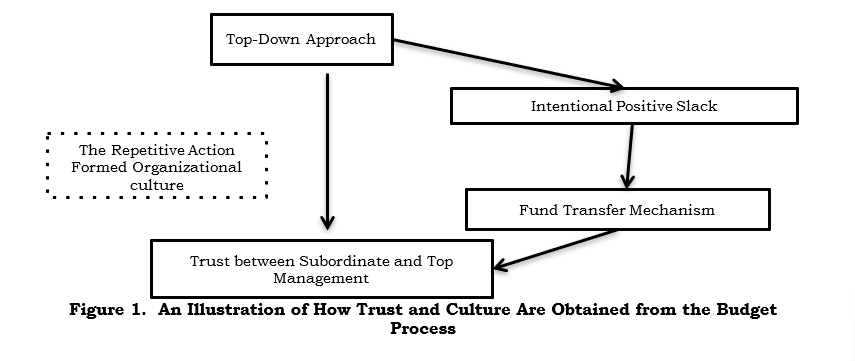
- Every submitted article will be blind-reviewed by a minimum of two reviewers.
- When required, the editor will change or fix spelling and correct the article's grammar without changing its substantial meaning.
- Manuscripts should be submitted directly to JAMAL OJS at www.jamal.ub.ac.id.
- The article should be in MS Word, single-spaced, font size 10, Bookman Old Style. The minimum number of pages for qualitative and mixed method articles is 15 pages, and 10 pages for quantitative articles (FULL PAGE).
- The author(s) should use a reference application (Mendeley).
- After the article meets the structure standards, the management team will conduct a plagiarism test using a reference application (Turnitin / Plagscan). The author(s) is prohibited from conducting plagiarism testing without the management team's knowledge. The maximum plagiarism limit is 5%. The author will be asked to revise the article if the article does not meet the maximum plagiarism limit.
- Complement to the sponsors and peer discussions (if any) should be placed as acknowledgement of the article.
- All articles as results of studies in particular research sites/institutions/informants should include a statement of ethical clearance that the institution/research informants have confirmed.
- Journal of Multiparadigm Accounting publishes its journal thrice a year, on April-August, August-December, and December-April. The article must be sent at least one month before publication (March, July, and November).
- Please check article samples for editorial-style examples at www.jamal.ub.ac.id.
Submission Preparation Checklist
As part of the submission process, authors are required to check off their submission's compliance with all of the following items, and submissions may be returned to authors that do not adhere to these guidelines.
- The submission has not been previously published, nor is it before another journal for consideration (or an explanation has been provided in Comments to the Editor).
- The submission file is in OpenOffice, Microsoft Word, RTF, or WordPerfect document file format.
- Where available, URLs for the references have been provided.
- The text is single-spaced; uses a 10-point font (Bookman Old Style); employs italics, rather than underlining (except with URL addresses); and all illustrations, figures, and tables are placed within the text at the appropriate points, rather than at the end.
- The text adheres to the stylistic and bibliographic requirements outlined in the Author Guidelines, which is found in About the Journal.
- If submitting to a peer-reviewed section of the journal, the instructions in Ensuring a Blind Review have been followed.
Copyright Notice
Authors who publish with this journal agree to the following terms:
- Authors retain copyright and grant the journal right of first publication with the work simultaneously licensed under a Creative Commons Attribution License (CC BY-NC) that allows others to share the work with an acknowledgement of the work's authorship and initial publication in this journal.
- Authors are able to enter into separate, additional contractual arrangements for the non-exclusive distribution of the journal's published version of the work (e.g., post it to an institutional repository or publish it in a book), with an acknowledgement of its initial publication in this journal.
- Authors are permitted and encouraged to post their work online (e.g., in institutional repositories or on their website) prior to and during the submission process, as it can lead to productive exchanges, as well as earlier and greater citation of published work (See The Effect of Open Access).
Under the following terms of
Creative Commons (CC BY-NC):
Attribution — You must give , provide a link to the license, and . You may do so in any reasonable manner, but not in any way that suggests the licensor endorses you or your use.
NonCommercial — You may not use the material for .
- No additional restrictions — You may not apply legal terms or that legally restrict others from doing anything the license permits.
Privacy Statement
The names and email addresses entered in this journal site will be used exclusively for the stated purposes of this journal and will not be made available for any other purpose or to any other party.












